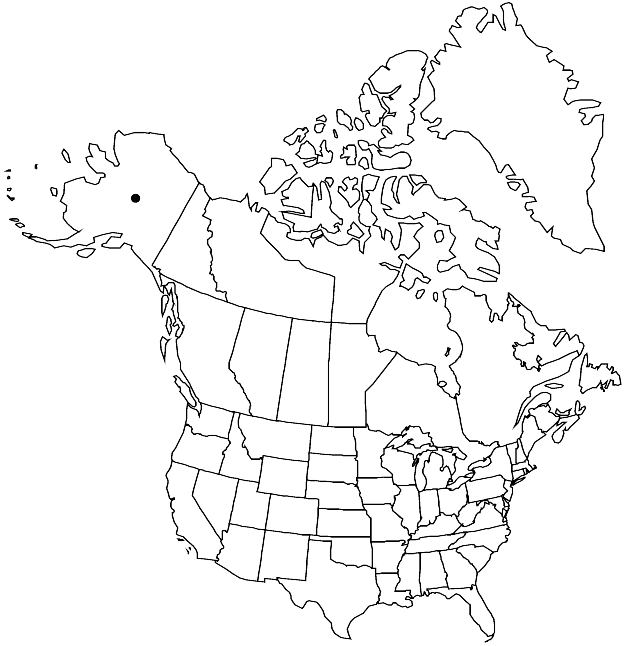Brachythecium jacuticum
Arctoa 19: 19, fig. 7. 2011.
Plants slender to medium-sized, in loose to moderately dense mats, light yellowish or whitish. Stems to 5 cm, creeping, terete-foliate, irregularly or often sparsely pinnate, branches to 5 mm, straight to slightly curved, terete-foliate. Stem leaves erect, moderately loosely arranged, ovate-lanceolate or lanceolate, broadest at 1/7 leaf length, slightly concave, not or weakly plicate, 2–2.4 × 0.6–0.8 mm; base indistinctly to distinctly narrowed, narrowly short-decurrent; margins plane or recurved near base, entire; apex gradually acuminate; costa to 60% leaf length, slender, terminal tooth indistinct or absent; alar cells subquadrate to short-rectangular, small, 13–30 × 12–16 µm, walls thick, region ± distinctly delimited, of 4 or 5 × 3–5 cells; laminal cells linear, 70–125 × 5–9 µm; basal cells 25–45 × 9–13 µm, walls somewhat porose, region in 1–3 rows. Branch leaves similar, somewhat smaller. Sexual condition autoicous. Seta red-brown, 1.5–2 cm, smooth. Capsule inclined to horizontal, elongate, red-brown, curved, 2 mm; annulus separating by fragments; operculum conic. Spores 12–16 µm.
Habitat: Soil, rock, open and moderately shaded habitats
Elevation: low elevations (0 m)
Distribution

Alaska, ne Asia.
Discussion
Brachythecium jacuticum is characterized as rather slender, usually pale whitish plants, with lanceolate leaves, entire margins, narrow laminal cells reaching almost to the leaf base, thick-walled and porose basal cells, and a small group of quadrate alar cells. Perigonia and perichaetia are usually expressed in the severe conditions where this species occurs, and its autoicous sexuality differentiates B. jacuticum from slender forms of B. albicans. Although related to the B. salebrosum group, this species differs by having entire leaves that are usually totally eplicate. Brachythecium turgidum is probably most closely related to B. jacuticum with its autoicous sexual condition, entire leaf margins, and incrassate porose basal cells, but B. turgidum is a larger plant (leaves 2.5–3.5 × 0.9–1.3 mm versus 2–2.4 × 0.6–0.8 mm in B. jacuticum), and has strongly plicate leaves which are conspicuous in almost all collections, except plants from very wet places near melting late snow beds. However, plants from the latter type of habitats are still more robust, and have strongly concave and abruptly acuminate leaves, approaching the habit of B. cirrosum, thus a confusion of B. jacuticum and B. turgidum is unlikely. In addition, B. jacuticum is often rather regularly pinnate in contrast to weakly branched B. turgidum.
Selected References
None.